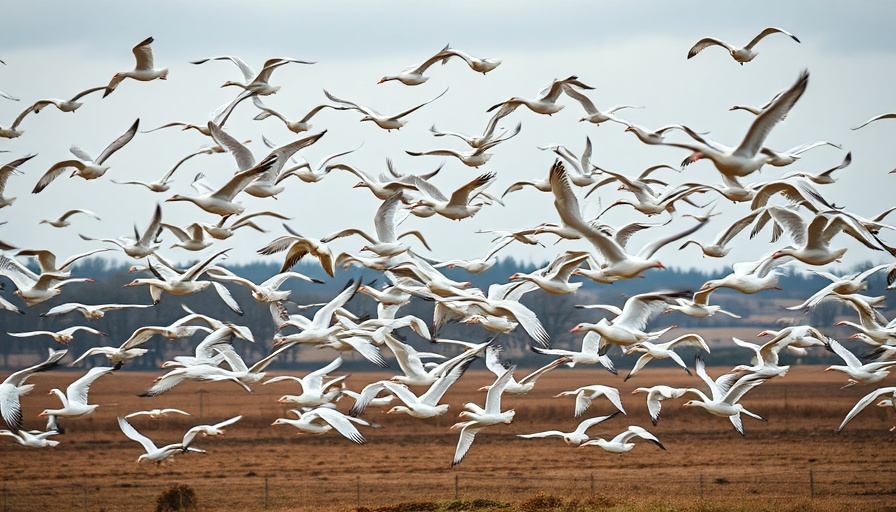
Captivating Sky Dancers: The Migration of Snow Geese
As winter approaches, a magical transformation occurs across North America with the annual migration of Snow Geese. From the remote arctic and subarctic nesting grounds of northeastern Russia to Greenland, these remarkable birds embark on an epic journey southward, arriving in droves to feed in wetlands and agricultural fields. This seasonal spectacle not only captivates birdwatchers but also highlights the intricate web of life tied together by migratory patterns.
Historical Context: Understanding the Journey
The flight of Snow Geese stands as a testament to survival and the connection between habitat and behavior. Historically, these birds have evolved to navigate vast distances, relying on memory and environmental cues to guide them. In recent years, however, climate change and habitat development have posed new challenges to their routes and stopover sites, creating urgency in conservation efforts.
Visual Poetry in Motion: A Swirl of Wings
The sheer visual impact of Snow Geese in flight is nothing short of breathtaking. Renowned naturalist Barry Lopez eloquently articulates the experience: "...as if the earth had opened and poured them forth, like a wind, a blizzard...great swirling currents of birds in a rattling of wings..." Such descriptions invite us to witness the harmonious synchronicity found in nature, offering a rare moment of unity between humanity and the natural world.
The Ecological Significance of Migration
Beyond their aesthetic beauty, Snow Geese play a vital role in their ecosystems. Their feeding habits help shape vegetation patterns, ultimately affecting the habitats of countless other species. Moreover, their migratory paths serve as indicators of environmental health. The shifts in their patterns can reveal crucial information about climate change and habitat loss, reinforcing the need for ongoing research and conservation initiatives.
Future of the Flyways: Protecting Habitats
As we embrace the wonder of watching Snow Geese take flight, let us also reflect on our responsibility to protect their habitats. Conserving wetlands and agricultural lands is paramount in ensuring that these magnificent birds can thrive. By advocating for sustainable practices, we can work collectively to preserve the natural marvel that is the migration of Snow Geese.
 Add Row
Add Row  Add
Add 




Write A Comment